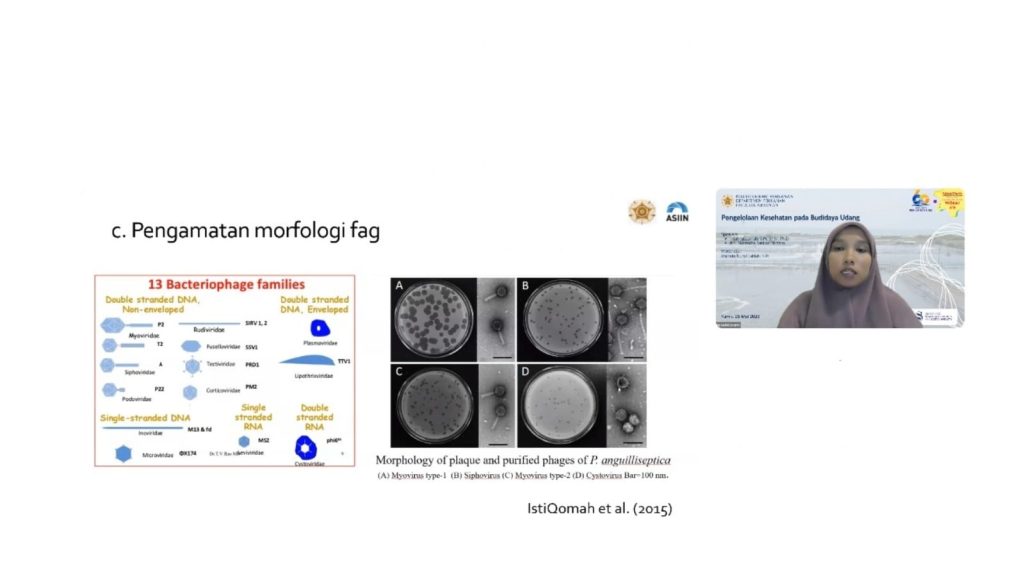The Department of Fisheries, Universitas Gadjah Mada, in collaboration with the Center for Seafood Security and Sustainability and supported by the Erasmus+ Programme of the European Union, successfully held SinnTech Webinar #16 themed “Health Management in Shrimp Aquaculture” on Thursday, May 25, 2023. The webinar featured two speakers: Indah Istiqomah, S.Pi., M.Si., Ph.D., who presented “Bacteriophages for Shrimp Disease Control,” and Drh. Narendra Santika Hartana, who delivered a talk on “Disease Management in Today’s Vannamei Shrimp Farming.” The session was moderated by Ma’rufa Nurul Latifah, S.Pi., a student of the Fisheries Science Master’s Program.

The webinar began with welcoming remarks by the Dean of the Faculty of Agriculture, Ir. Jaka Widada, M.P., Ph.D., followed by program introductions by Dr. Susilo Budi Priyono, S.Pi., M.Si. (Aquaculture Program) and Dr. Eko Setyobudi, S.Pi., M.Si. (Master’s in Fisheries Science Program).
Vannamei shrimp (Litopenaeus vannamei) aquaculture is one of the fastest-growing industries that provides essential protein sources globally. Indonesia is currently the third-largest shrimp producer in the world. However, the emergence of diseases such as Acute Hepatopancreatic Necrosis Disease (AHPND), also known as Early Mortality Syndrome (EMS), caused by Vibrio parahaemolyticus, poses a major challenge for farmers due to its significant impact on productivity. The use of bacteriophages in shrimp farming has been proposed as a promising solution for bacterial infection prevention. Bacteriophages can be applied via prophylactic or therapeutic approaches.
AHPND was first detected in Indonesia between late 2019 and early 2020, affecting all scales of shrimp farming. Disease management and mitigation strategies to prevent AHPND include increasing sediment pond capacity, adapting shrimp toilet structures (expanding sludge collection areas in central drains), and applying coagulants to precipitate toxins in pond bottoms. Aside from bacteria, shrimp are also susceptible to viral diseases such as White Spot Syndrome Virus (WSSV) and Infectious Myonecrosis Virus (IMNV). Mitigation strategies for these viral infections include eliminating viral carriers, applying disinfection protocols, and using immunostimulants.


